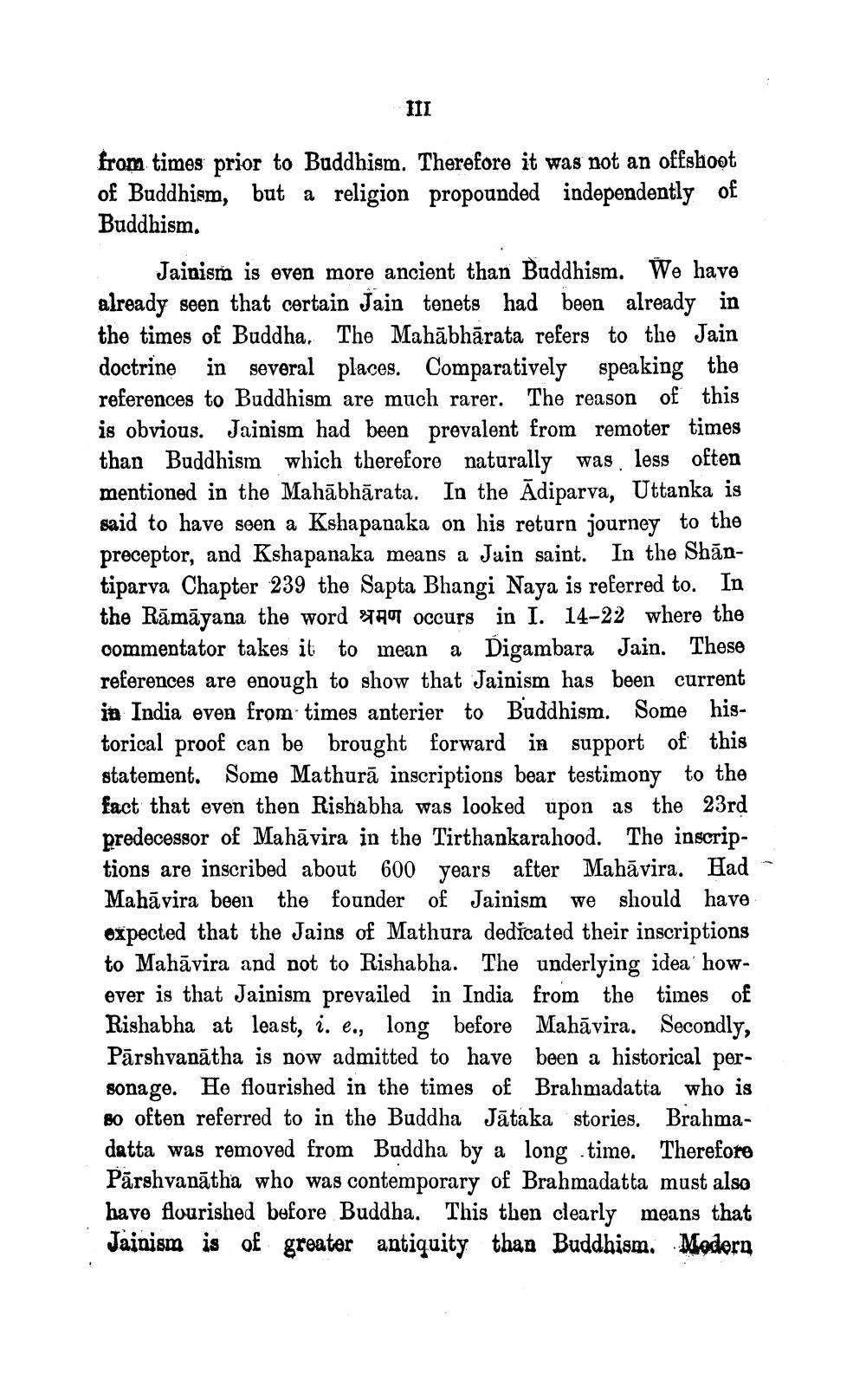________________
III
from times prior to Buddhism. Therefore it was not an offshoot of Buddhism, but a religion propounded independently of Buddhism.
Jainism is even more ancient than Buddhism. We have already seen that certain Jain tenets had been already in the times of Buddha. The Mahābhārata refers to the Jain doctrine in several places. Comparatively speaking the references to Buddhism are much rarer. The reason of this is obvious. Jainism had been provalent from remoter times than Buddhism which therefore naturally was less often mentioned in the Mahābhārata. In the Ādiparva, Uttanka is said to have seen a Kshapanaka on his return journey to the preceptor, and Kshapanaka means a Jain saint. In the Shāntiparva Chapter 239 the Sapta Bhangi Naya is referred to. In the Rāmāyana the word TAT occurs in I. 14-22 where the commentator takes it to mean a Digambara Jain. These references are enough to show that Jainism has been current in India even from times anterier to Buddhism. Some historical proof can be brought forward in support of this statement. Some Mathurā inscriptions bear testimony to the fact that even then Rishabha was looked upon as the 23rd predecessor of Mahāvira in the Tirthankarahood. The inscriptions are inscribed about 600 years after Mahāvira. Had Mahāvira been the founder of Jainism we should have expected that the Jains of Mathura dedicated their inscriptions to Mahāvira and not to Rishabha. The underlying idea however is that Jainism prevailed in India from the times of Rishabha at least, i. e., long before Mahāvira. Secondly, Pārshvanātha is now admitted to have been a historical personage. He flourished in the times of Brahmadatta who is 80 often referred to in the Buddha Jātaka stories. Brahmadatta was removed from Buddha by a long time. Therefore Pārshvanātha who was contemporary of Brahmadatta must also have flourished before Buddha. This then clearly means that Jainism is of greater antiquity than Buddhism. Modern




